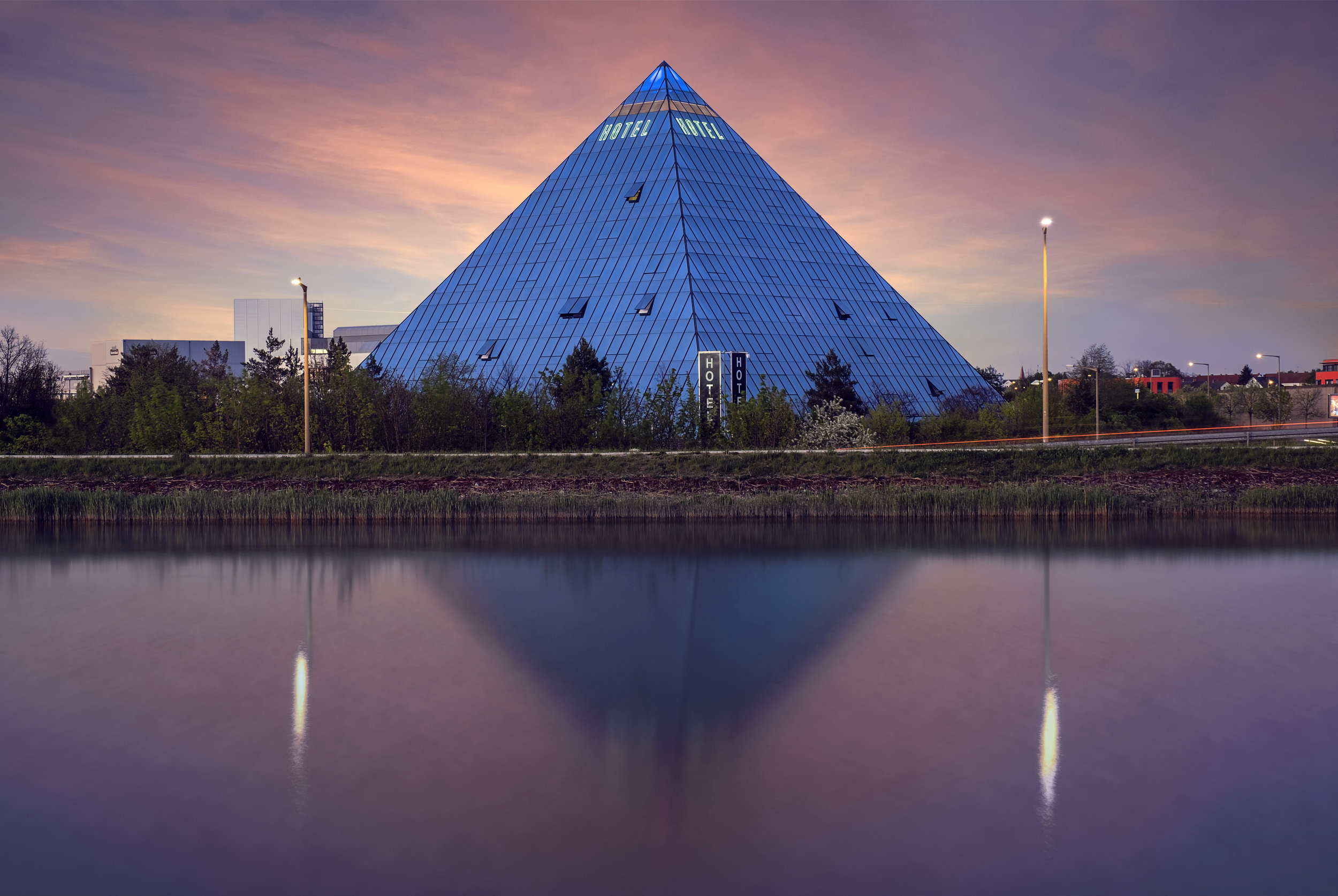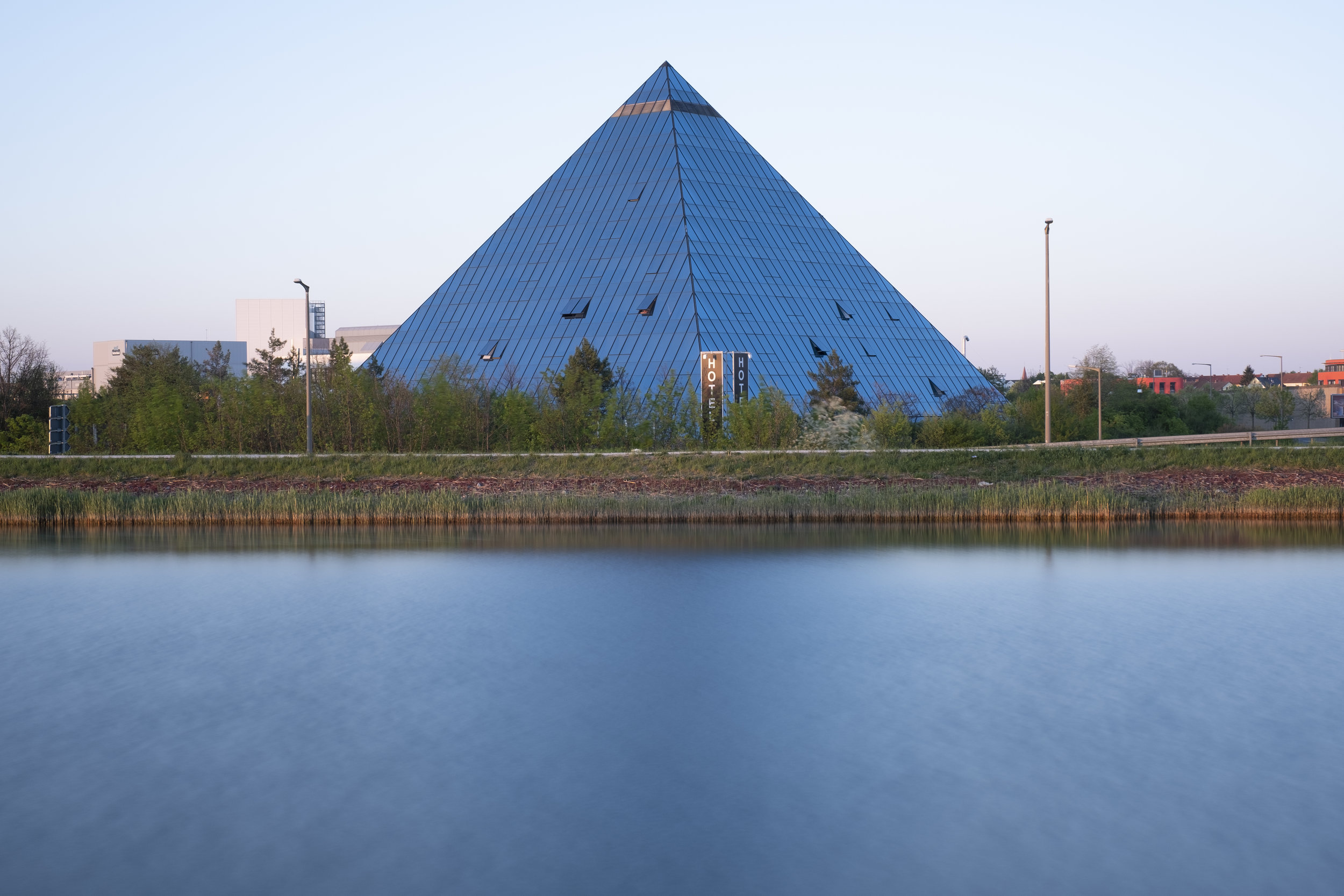Taking good pictures is one thing. Trying to create the best picture possible the other. In order to take this picture, I put in a lot of effort. Before going all the way by bike to Fürth (1 hour), I scouted the best location as good as possible beforehand. On the hotel's website, I found already a nice looking picture but to stand out from the local and international competition, it is essential to create the best picture possible! In order to do just that, I spent 3 hours at the exact same spot documenting the light changing throughout the golden hour, sunset and blue hour. Afterwards, I spent processed this picture for almost 2 hours to push it to its limits. Most of my clients are surprised when I tell them that a good picture takes lots of time, in this case 5 hours for one picture. I think, the difference is visible and the pricing justified. What do you think?
I blended together multiple pictures into one, so that I could show all the best moments in time: The streetlights were turned on, the light fell so I could capture car trails and the reflections in the water. The lights in the inside of the pyramid turned on, as well as the blue tip, the yellow strip light and the Hotel letters. As the sky did not turn out to be so great, I browsed my personal sky library for a fitting sky and replaced it. But attention: This sky also had to be reflected in the long-exposure water. I hope this gives you a proper idea of what time, effort and knowledge it takes to put together such a hero shot. It is always challenging and fun to create something extraordinary that most people have not seen before. And as an architectural photographer you cannot always wait for the perfect weather. You get booked for a day or two and have to deliver. Hence, it’s very important to improvise, pre-visualise your shot and be prepared for unspectacular skies or bad weather.




















